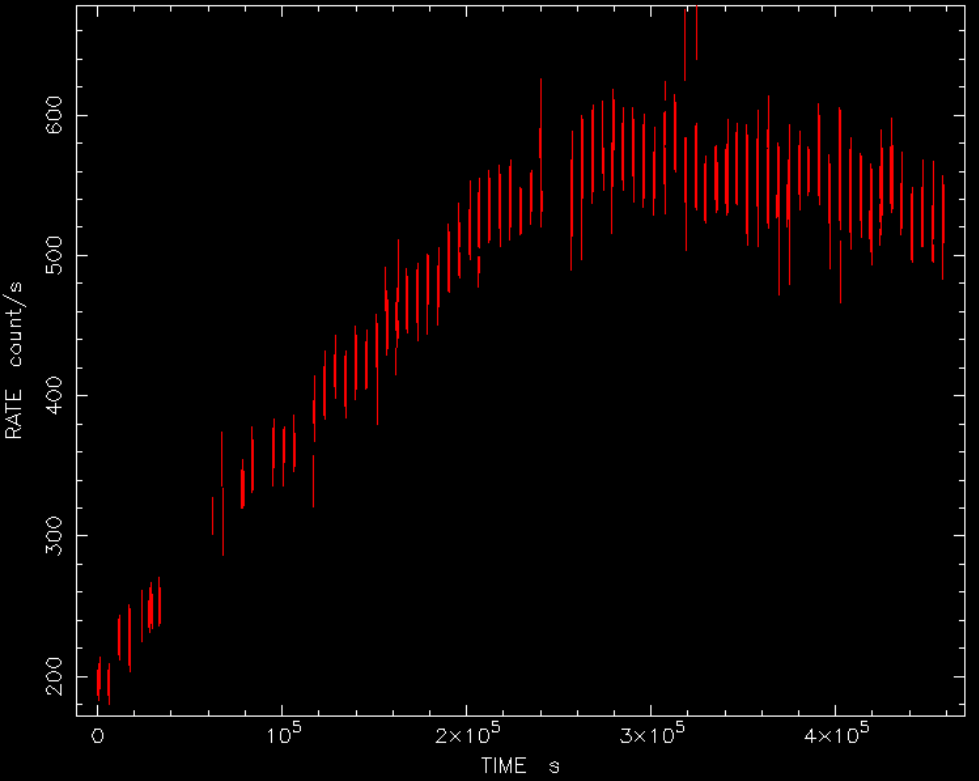NICER / ISS Science Nugget
for October 3, 2019
NICER seeks detection of periodicity from re-awakened XTE J1739-285
On 2019 September 27, routine monitoring of the Galactic Center with INTEGRAL revealed renewed activity from the
neutron star X-ray transient XTE J1739-285 (ATel
#13138). Follow-up observations with NICER commenced on
September 27, and continue through today. During this time, we observed the source count-rate increasing
steadily from 200 cts/s to near 600 cts/s and then begin to level off (see figure).
The NICER effort on this neutron star aims to catch a thermonuclear burst, with the hope of detecting a burst
oscillation. Such bursts are caused by the steady accretion of mass from a companion star until a critical mass
density is reached and nuclear ignition occurs. If the explosion is well localized on the surface of the neutron
star, then oscillations in intensity may be visible as the neutron star spins, bringing the explosion site in
and out of our view. This enables us to measure the rotational rate of the neutron star, which, in some cases,
can yield strong constraints on the star's internal composition and thus the "equation of state" of the densest
matter in the universe.
This particular neutron star is very interesting because NICER's predecessor observatory (NASA's Rossi X-ray
Timing Explorer, RXTE) detected, at low significance, a burst oscillation at a frequency of 1122 Hz, suggesting
that XTE J1739-285 may harbor the fastest spinning star known. Since then, XTE J1739-285 has been quiet, until
the current outburst seen by INTEGRAL and followed up intensively with NICER. So far, NICER has not detected any
bursts, but will continue to track this object.

Figure:
NICER's measured X-ray count rate for XTE J1739-285 during its ongoing outburst.
NICER's initial observations of XTE J1739-285 were reported in Astronomer's Telegram #13148 by Peter Bult et al.
<< Previous
Main Index
Next >>